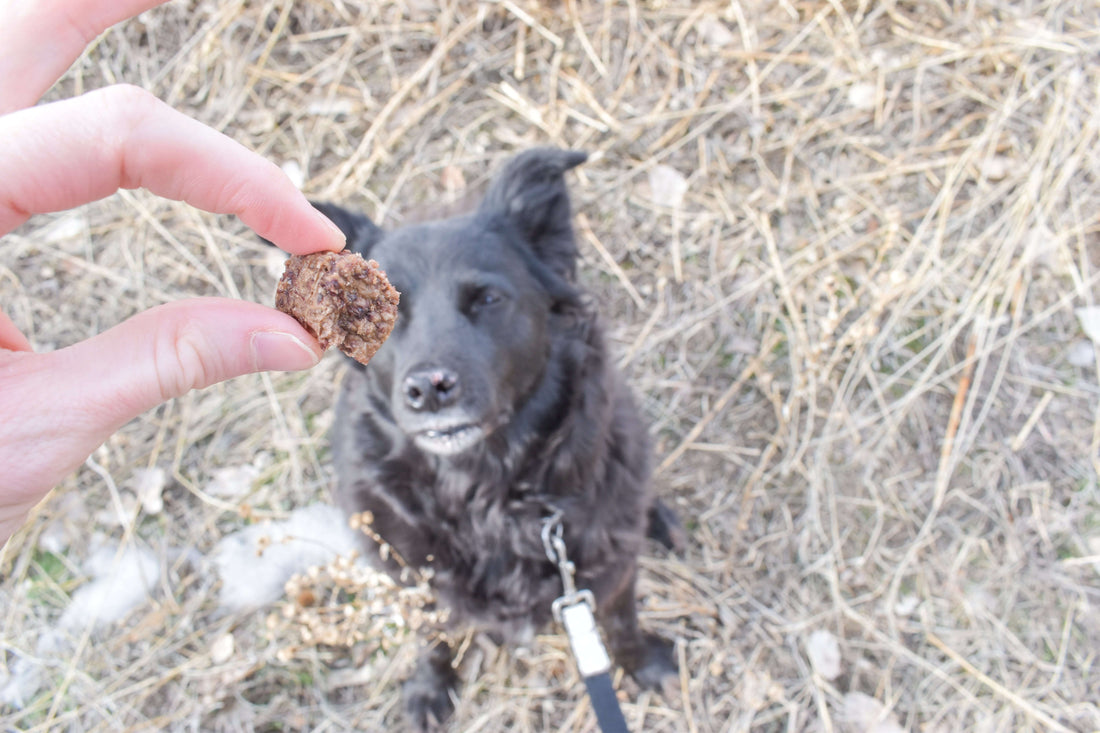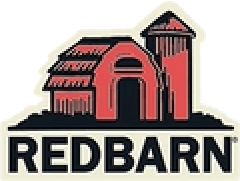
What’s the Best Dog Food for Allergies and Yeast Infections?
Food allergies and yeast infections are surprisingly common in dogs, especially as our canine companions age or encounter new foods and environments. When the immune system misfires or yeast overgrows, it often shows up first in the skin, ears, and digestive tract.
The good news? As a pet parent, you hold a powerful tool: your dog's diet. It's one of the most effective ways to support their skin, keep their coat healthy, boost their immune response, and significantly reduce those frustrating allergic flare-ups and yeast-driven problems.
In this guide, we’ll dig into why food allergies and yeast infections so often go hand in hand, how to identify problematic ingredients, and the types of dog food that may help. We'll also take a look at how to keep allergies and yeast under control long-term.
What Are Food Allergies and Yeast Infections?
Before picking the best dog food for allergies and yeast infections, it’s important to understand what these conditions are and how they’re connected. In this section, we'll look at food allergies and yeast infections in dogs and how they can impact your furry friend's health.
Food Allergies in Dogs
Food allergies occur when a dog’s immune system treats a particular food component (often a protein) as a threat and mounts an allergic reaction. Over time, repeated exposure causes chronic inflammation and uncomfortable symptoms.
Many dogs can develop sensitivities to common allergens, such as certain proteins or grains. However, allergic reactions can also be triggered by smaller, less obvious ingredients, like preservatives, additives, or flavorings often found in dog food.
Typical signs include itchy skin, redness, rashes, hot spots, recurring ear infections, and digestive upset. Since these symptoms are similar to other conditions, diagnosing them often needs careful testing and observation.
Yeast Infections in Dogs
Yeast infections are caused by fungi that normally live on a dog’s skin and ears but can overgrow under the right conditions. Warmth, moisture, or a weakened immune system give yeast the opportunity to thrive.
Signs include a strong odor, red or inflamed skin, greasy patches, scratching, and chronic ear infections. Because yeast feeds on sugars, a poor diet can make the problem worse and prolong discomfort.
What Ingredients Cause Problems Most Often?
Not all ingredients are equal when it comes to triggering allergies or worsening yeast infections. Here are the main categories pet parents should know about:
Common Protein Allergens
Chicken, beef, dairy, and eggs are among the most common allergens in dogs. Continuous exposure to these proteins often leads to allergic reactions, including itchy skin and chronic ear problems.
Some dogs may also develop sensitivities to lamb or fish over time if those are fed too frequently. Rotating to less common proteins can sometimes help reduce symptoms, though careful monitoring is always needed.
Grains and Fillers
Wheat, soy, and corn are widely used in dog foods as fillers but can act as allergens or intolerances in sensitive dogs. These may also contribute to inflammation that disrupts skin and coat health.
Beyond allergies, fillers add calories without much nutritional value, which may worsen weight issues and increase the risk of recurring infections.
Additives and Hidden Triggers
Artificial colors, flavorings, preservatives, and other additives can irritate a dog’s immune system. Even treats or supplements with hidden fillers may undo the benefits of a carefully selected main diet.
For sensitive dogs, choosing foods that are free from artificial additives is a safer choice and makes it easier to track allergic reactions.
Sugars and Carbohydrates
Because yeast feeds on sugars, foods high in simple carbohydrates or sweeteners can actively promote yeast growth. For dogs prone to yeast infections, a diet with fewer fermentable carbohydrates can help. These carbs are easily broken down by gut bacteria, which can feed yeast and cause overgrowth.
Excess starches in kibble, such as potato or pea flours, can also provide a fuel source for yeast, so choosing recipes with balanced carbs is important.
How Can You Tell If Food Is The Problem?
When your dog is dealing with itchy skin, digestive upset, or chronic ear infections, it can be hard to pinpoint the cause. One major clue is if the problems stick around all year, no matter the season. If you've tried flea treatments and the symptoms don't change with the weather, their food could be the culprit.
A veterinarian checkup is the best place to start, as they can rule out parasites, hormonal conditions, and primary skin allergies. If no other cause is found, an elimination diet is the most reliable way to identify whether food is behind the allergic reactions.
This involves feeding only a specific diet with limited or hydrolyzed proteins for 8-12 weeks while carefully tracking changes in the dog’s skin, digestion, and overall health. If symptoms improve, reintroducing old foods can confirm the trigger.
What Types Of Dog Food Can Help?
Now that we’ve covered the causes and symptoms, let’s look at solutions. The right dog food can ease allergies, support the immune system, and help keep yeast infections under control. Here are a few types of diet that help your pup feel better and stay healthy:
Limited-Ingredient Diets
These diets use one main protein and one carbohydrate source. This reduces the risk of allergic reactions and makes it easier to spot triggers. Because the formulas are simple, you can confidently identify problem ingredients without getting lost in complicated labels.
Novel Protein Diets
Novel protein diets feature less common sources like venison, duck, or fish. Since the immune system hasn’t been exposed to these proteins before, it’s less likely to overreact. Novel proteins are especially useful during elimination trials, giving the body a chance to reset and recover.
Hydrolyzed Protein Diets
Hydrolyzed protein diets contain proteins that are broken down into tiny pieces. Your dog's immune system can't easily recognize these small fragments, which makes an allergic reaction less likely. Vets often recommend these diets when other food trials haven't worked or for dogs that are allergic to several different ingredients.
Grain-Free Diets
By removing wheat, corn, and soy, grain-free diets can help dogs sensitive to common allergens. They may also support a healthier coat and digestive health in the right cases. However, not every dog needs to avoid grains, so grain-free diets are best used when an allergy or intolerance is confirmed.
Prescription Diets
For severe or chronic conditions, vets may prescribe specialized diets. These often combine hydrolyzed proteins with precise nutrient balance to help manage long-term food sensitivities. While they can be more expensive, prescription diets can provide much-needed relief when over-the-counter foods don’t resolve symptoms.
Why Consider Redbarn For Sensitive Dogs?
At Redbarn, we know that choosing the right dog food for sensitivities isn’t easy. That’s why we’ve created recipes designed to support dogs with allergies, skin issues, and yeast infections. Here are a few of our best options for sensitive pups:
Grain-Free Diets
Our Grain-Free Dry Dog Food contains no grains, gluten, eggs, canola oils, or other common allergens. With a focus on high-quality animal proteins and essential nutrients, our recipes are formulated to support a healthy coat, digestive balance, and strong immune system.
Digestive Health Gently Air Dried Powerfood
Available in Beef & Lamb, Chicken & Turkey, and Fish recipes, Redbarn Air Dried Powerfood Digestive Health is ideal for dogs with sensitive stomachs or food allergies.
These gently air dried foods are high in protein, made with minimal fillers, and enriched with prebiotics and postbiotics to support gut and immune health. Because gut health plays a vital role in skin and ear conditions, our Powerfood recipes are an excellent choice for dogs prone to allergies or yeast infections.
Limited Ingredient Treats
Our Bully Sticks, Collagen Chews, and natural Bones provide simple, high-quality treats without hidden allergens. Keeping treats consistent with your dog’s main diet helps reduce flare-ups and ensures your pup enjoys something safe and satisfying.
How Can You Keep Allergies And Yeast Under Control Long Term?
Long-term control of allergies and yeast infections requires more than a single food switch. It’s about building sustainable habits, monitoring your dog’s health, and staying consistent over time.
These practical steps can help reduce relapses and keep your dog comfortable:
● Switch foods slowly over 7-10 days. Gradual transitions prevent stomach upset and give your dog’s digestive system time to adapt.
● Stay consistent with a diet that works. Rotating too often can reintroduce allergens or confuse results.
● Keep a food log. Record meals, treats, and supplements alongside any reactions to identify patterns over time.
● Check skin, ears, and digestion regularly. Look for early signs of flare-ups so you can intervene quickly.
● Schedule routine veterinary visits. Your vet can help keep your dog healthy and track their progress.
FAQs About the Best Dog Food for Allergies and Yeast Infections
What dog food ingredients trigger yeast?
Ingredients high in sugars or fermentable carbohydrates can make it easier for yeast to grow. Limiting refined grains and additives helps reduce the risk.
What kills yeast infections in dogs naturally?
Supporting the immune system, using probiotics, and avoiding high-sugar diets can help. Always talk to your vet before trying natural remedies like apple cider vinegar rinses.
What is the best dry dog food for dogs with allergies and yeast infections?
The best option depends on your dog’s specific sensitivities. Look for limited-ingredient, novel protein, or hydrolyzed protein diets that are free from common allergens. Redbarn Grain-Free and Air Dried Powerfood recipes are designed to support dogs with skin allergies and digestive sensitivities.
Key Takeaways
● Food plays a central role. A dog’s diet heavily influences skin, coat, and immune response.
● Common allergens and hidden triggers matter. Proteins such as chicken and beef, along with ingredients like wheat, soy, or certain additives, are common causes of allergies.
● An elimination diet is the best test. It's the surest way to find out what foods your dog is sensitive to.
● Certain diet types help. Limited-ingredient, novel protein, hydrolyzed, and grain-free formulas are the most effective.
● Redbarn has great options. Our grain-free kibble, Digestive Health Air Dried Powerfood, and limited-ingredient treats are made to help sensitive dogs feel their best.
● Consistency and monitoring are key. Managing your dog's diet carefully and working with your vet are vital for keeping allergies under control long-term.
Ready for a Healthier, Happier Dog?
Helping your dog find lasting relief from food allergies and yeast infections comes down to careful observation, smart food choices, and working closely with your vet. By understanding the signs, managing your dog's diet and carefully monitoring their progress, you can help them live a happier and healthier life free from discomfort.
